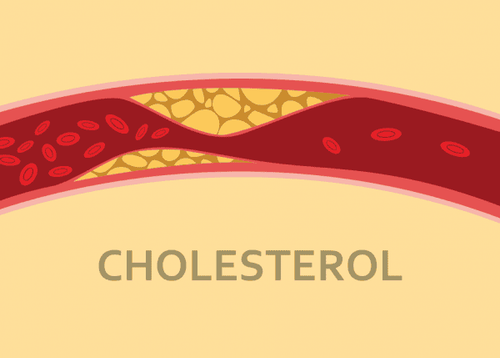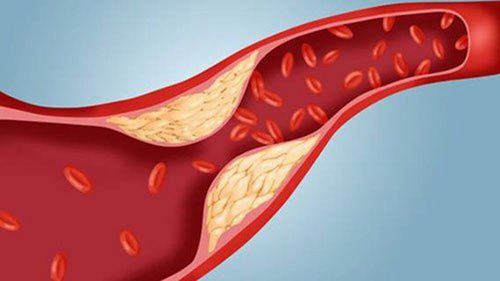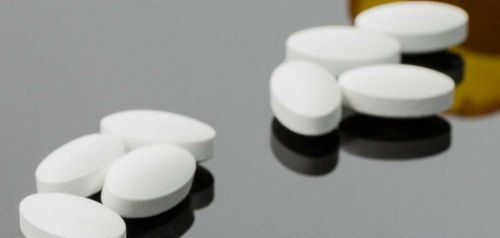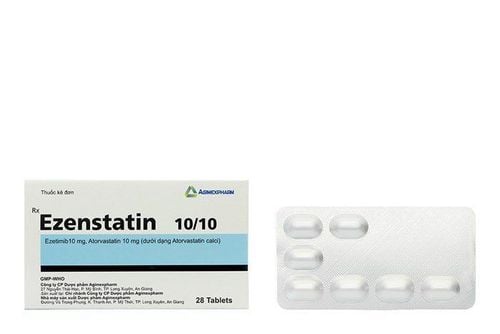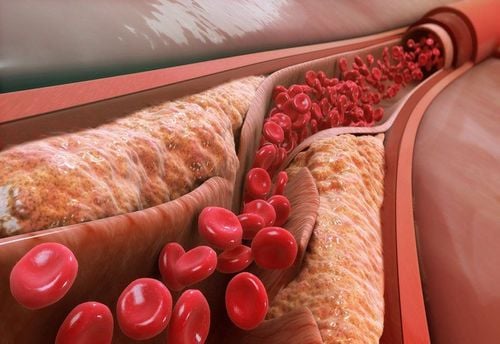This is an automatically translated article.
Fenofibric acid is indicated in the treatment of dyslipidemia. In order for the drug to be effective, patients need to combine it with lifestyle changes such as regular exercise, weight loss if overweight, obesity, stopping smoking, ...1. What is the effect of Fenofibric acid?
What does Fenofibric acid do? Fenofibric belongs to the group of fibrates, used with a proper diet to help lower “bad” cholesterol (LDL, triglycerides) and raise “good” cholesterol (HDL) in the blood. The mechanism of action of the drug is to naturally increase the enzyme that breaks down fat in the body. Lowering the "bad" cholesterol will reduce the risk of pancreatic diseases such as pancreatitis. However, fenofibric acid may not reduce the risk of heart attack or stroke. In addition to taking drugs, patients need to actively change their lifestyles such as exercising regularly, losing weight if overweight, stopping smoking, etc. A healthy lifestyle will help the drug have a good treatment effect. than.Fenofibric acid is used as follows:
The drug is taken by mouth, usually once a day, taken with food or without food according to the doctor's instructions. Fenofibric tablets come in many different dosage forms, some of which must not be crushed or chewed before taking, while others can be crushed or chewed. Follow the directions for use on the package or as directed by your doctor. The dose of Fenofibric acid is prescribed by the doctor based on the patient's medical condition and response to treatment. If the patient is also being treated for high blood lipids with bile acid-binding resins such as cholestyramine or colestipol, take fenofibric acid at least 1 hour before or at least 4-6 hours after these drugs. . Because drugs that bind bile acids can bind to fenofibric acid, reducing the drug's effect. Patients need to take the drug regularly to get the most effective treatment. To make it easier to remember to take your medication, take it at the same time each day. The patient absolutely should not take the drug at a higher dose, more often or for a longer time than directed by the doctor. Since blood lipid levels will not drop any faster, the risk of side effects will increase. Patients need to continue taking the medicine even if they feel well. Because it can take up to 2 months for the drug to take full effect.
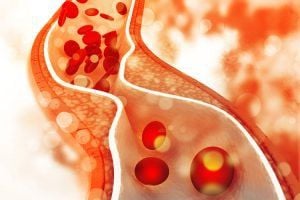
Fenofibric acid có tác dụng hạ hàm lượng cholesterol “xấu” trong cơ thể
2. Fenofibric acid side effects
Most patients using Fenofibric do not experience significant side effects. However, in rare cases dangerous side effects can occur such as:
Gallstones and liver problems: tell your doctor if, after a period of taking the medicine, the patient has symptoms such as nausea, persistent vomiting, loss of appetite, stomach pain, yellow eyes, jaundice, dark urine,. Rhabdomyolysis: tell your doctor right away if you develop muscle aches, pain, weakness (especially with fever or unusual tiredness), signs of kidney problems (such as changes in the amount of blood) urine,...). Frequent bleeding, bruising, unusual tiredness Chest pain, sudden pain, red swelling in the legs; signs of infection such as persistent sore throat, fever, swollen lymph nodes; chills, cough. Although very rare, fenofibric acid can seriously reduce "good" HDL cholesterol. Therefore, patients need to have regular blood lipid tests. Tell your doctor right away if the results are abnormal. Serious allergic reactions to fenofibric acid are very rare, but the consequences are very serious and can be life-threatening. Get medical help right away if, after taking Fenofibric acid, you develop symptoms of a serious allergic reaction such as itching, rash, dizziness, swelling (especially of the face, tongue, or throat), dizziness serious,...
3. Precautions when taking Fenofibric acid
Before taking fenofibric acid, tell your doctor if you have any of the following conditions:
Allergy to fenofibric acid or other drugs in the fibrate class such as fenofibrate or to any other substances. Have a history of diseases such as kidney disease, liver disease, gallbladder disease, alcoholism. Depending on the patient's condition, the doctor will adjust the prescription of Fenofibric acid accordingly. Some other precautions when using Fenofibric acid include:
Before surgery or dental procedures, patients should tell their doctor or dentist all the medications they are taking, including Fenofibric acid. During pregnancy, Fenofibric should be used only when clearly needed. Ask your doctor about the benefits and risks of taking the drug during pregnancy. Current data do not indicate whether Fenofibric acid passes into breast milk. To reduce the risk to the infant, breast-feeding is not recommended while taking Fenofibric acid and for 5 days after stopping it.
4. Fenofibric acid drug interactions
Interactions between Fenofibric acid and concomitant medications may change the way the medicine works or increase the risk of serious side effects. Before using Fenofibric acid, the patient should inform the doctor of all the drugs they are using, including prescription drugs, non-prescription drugs, dietary supplements,... Absolutely do not start using, change change the dose or stop any medication without your doctor's approval.
Drugs that can interact with Fenofibric acid are anticoagulants (such as warfarin). Fenofibric has very similar properties to Fenofibrate, so do not use drugs containing Fenofibrate while taking Fenofibric acid.

Thuốc Fenofibric acid có thể tương tác với thuốc chống đông máu
5. Other notes when taking Fenofibric acid
5.1. Treatment of drug overdose
If the patient takes an overdose of Fenofibric acid and has serious symptoms such as fainting or difficulty breathing, immediately take the patient to the nearest medical facility for treatment.
5.2. What if I forget to take a dose of Fenofibric acid?
If the patient forgets to take a dose of Fenofibric acid, take it as soon as he remembers. If it is almost time for your next dose, skip the missed dose and take your next dose at the usual time. Never take a double dose of Fenofibric acid to make up for a missed dose.
5.3. Fenofibric acid storage
Store Fenofibric acid at room temperature, away from direct light and high humidity. Do not keep medicine in the refrigerator or bathroom, keep it out of reach of children.
During treatment with medication, patients need to have regular health check-ups and perform tests such as cholesterol/triglyceride test, liver and kidney function test, blood count,... Results The test will help the doctor evaluate the effectiveness of the drug treatment and detect any side effects early, if any. Fenofibric belongs to the group of fibrates, used with a proper diet to lower "bad" cholesterol (LDL, triglycerides) and raise "good" cholesterol (HDL) in the blood. To ensure effective treatment, patients need to take the medicine as prescribed and follow the doctor's instructions.
Please dial HOTLINE for more information or register for an appointment HERE. Download MyVinmec app to make appointments faster and to manage your bookings easily.
Reference source: webmd.com





